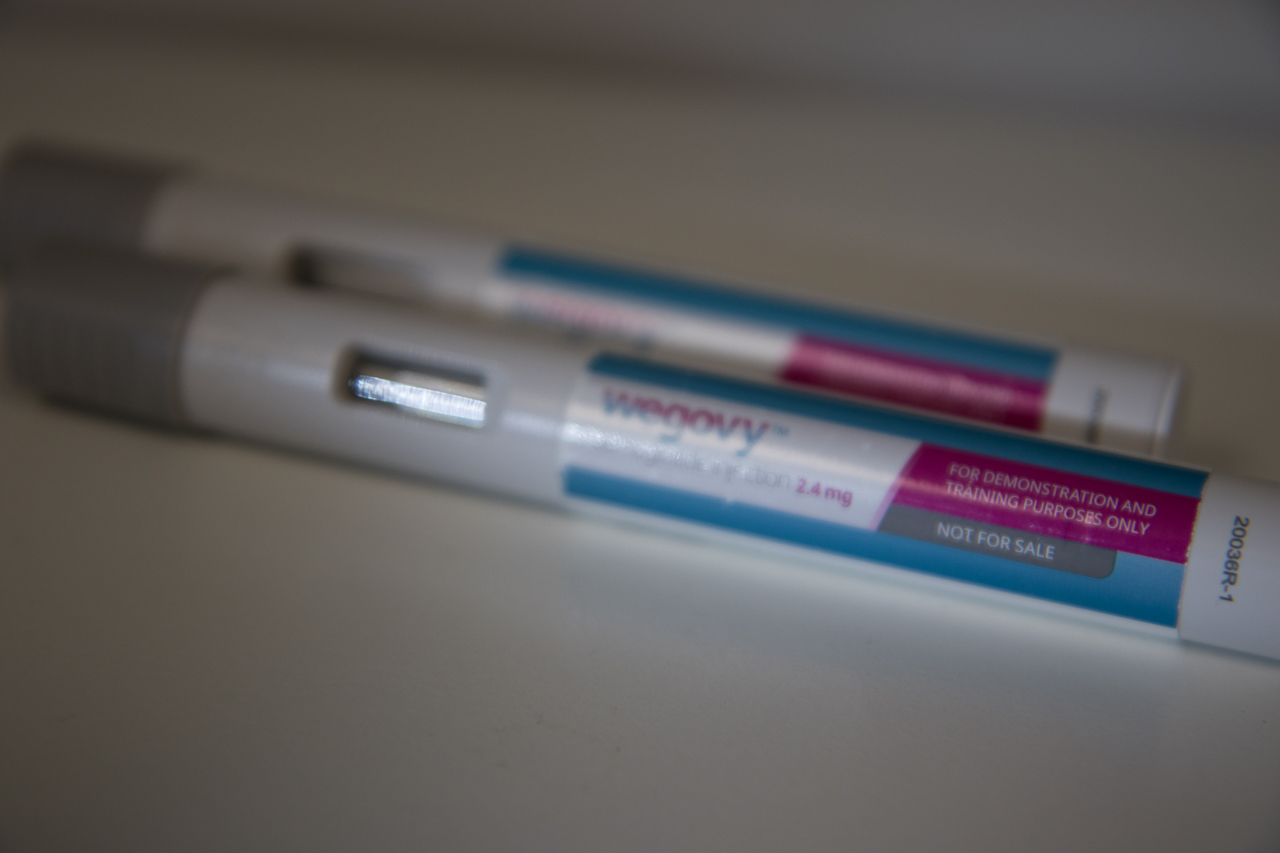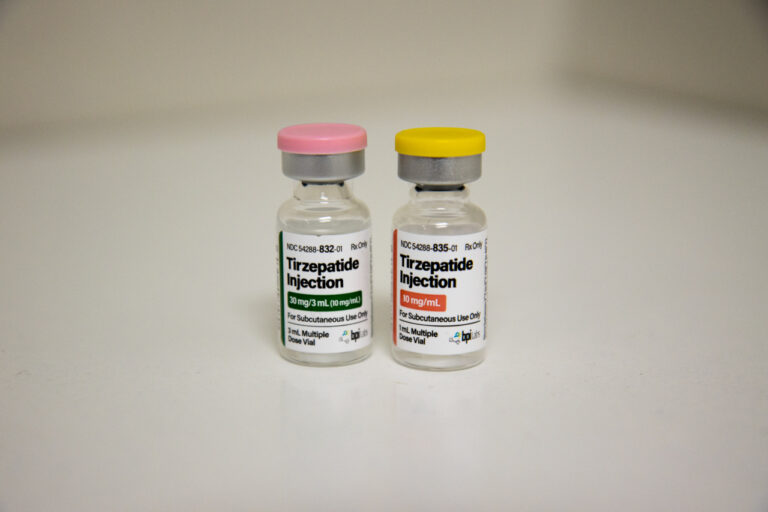
Throwdown! Phentermine vs. Semaglutide for Weight Loss
Unless you live under a rock, by now you’ve heard of semaglutide – the weekly weight loss injection. But how does semaglutide stack up against the first-ever weight loss medication, phentermine?
History of Semaglutide and Phentermine
Semaglutide was developed by Novo Nordisk as a treatment for type 2 diabetes and marketed as Ozempic in 2017, followed by an oral form called Rybelsus in 2019. In 2021, it was approved as a once weekly injection for chronic weight management in adults and kids down to age 12 as Wegovy.
Phentermine was developed as an appetite suppressant and approved for short-term use in 1959. It has since become common practice to use phentermine for chronic weight management. A newer version of phentermine (combining phentermine with topiramate in one pill) was approved for chronic weight management in adults and kids down to age 12 in 2012 and marketed as Qsymia.
How do Semaglutide and Phentermine work for weight loss?
Semaglutide mimics a hormone the body makes called GLP-1. This hormone is released by the gut after we eat and serves both to lower blood sugar (thus its use in type 2 diabetes) and provides a feeling of satisfaction. The body’s natural GLP-1 is broken down in a few minutes. Conversely, semaglutide has a half-life of an entire week. People on semaglutide get less hungry and report feeling fuller much more quickly when they start eating.
Phentermine on the other hand acts as a mild stimulant in the appetite center, telling the brain that it’s not time to eat now. People on phentermine are less inclined to think about food, and more inclined to do activities – like cleaning the basement! Because of the mild stimulant effect, people on phentermine generally report more energy and focus. If the dose is too high, people can feel over-stimulated (like having had too much coffee).
How much weight does a person lose on Semaglutide or Phentermine?
Both phentermine and Wegovy are recommended to be used with a properly structured food, behavioral, and physical activity plan overseen by a physician (or other healthcare provider) properly trained in weight management (we recommend one that has completed certification by the American Board of Obesity Medicine).
Wegovy (semaglutide 2.4 mg) achieves an average weight loss of 15% of the total body weight, or 35 pounds over the first year of treatment. It is unclear how much weight is lost with other forms of semaglutide that are used “off-label” for weight loss, but we would expect lower doses found in Ozempic (commonly prescribed as 1/2 – 1 mg) to provide less weight loss than Wegovy.
Clinical experience with phentermine is that it achieves an average weight loss of 10%, and Qsymia ~12%, or 20-25 pounds. Generally this weight is lost during the first 6 months of treatment.
Side effects
Semaglutide causes a lot of gastrointestinal side effects including nausea, vomiting, diarrhea, constipation, heartburn, burping, and abdominal pain. Other side effects may include fatigue and headache. Side effects are usually mild to moderate and tend to get better over time. However, Wegovy does have 5 strengths, and side effects can come back with each step up in dose. Less common serious side effects can include pancreatitis and gallbladder attacks. Read more here.
Phentermine on the other hand has mild stimulant side effects. It can elevate blood pressure and heart rate, and it can make people feel irritable. This is more likely if the dose is too high, or escalated too rapidly. Read more here.
Other Potential Benefits
Wegovy has been shown to decrease the risk of a recurrent major adverse cardiovascular event by 20%.
Phentermine can improve energy, mood and focus.
Cost
Wegovy retail price is ~$1,500 monthly. If you have insurance coverage, it is usually ~$25 / month. If you do not have insurance coverage, you may qualify for a coupon bringing the price to $650 / month.
Ozempic (off-label for weight loss) is ~$900 / month. Insurance will not cover Ozempic for purposes of weight loss – only for treatment of type 2 diabetes. We have found pharmacies that stock Ozempic for much less than this price (~$400 / month for authentic Ozempic).
Compounds may be less expensive than brand-name, but are not regulated by the FDA. A full discussion of compounded semaglutide for weight loss is beyond the scope of this article, but if using it, we do recommend knowing which pharmacy makes it, making sure the pharmacy is under FDA regulation, meaning 503B vs. 503A pharmacy, and that it is used under proper medical supervision. Talk to your provider and CNC about potential risks vs. benefits of compounded semaglutide for weight loss.
Phentermine is available in a variety of doses, and is generally ~$25 – $50 / month.
Cost per pound per year
As you can see, when broken down to a cost per pound per year of weight loss, phentermine costs around $6-15 per pound, vs. Wegovy $9 if insured, vs $514 / pound lost if paying retail.
Finaly Thoughts
As you can see, there is not a one size fits all approach when it comes to your health. Many people would be good candidates for either phentermine or semaglutide. So how do you pick?
Well, for most people in reasonably good health (no history of heart disease, uncontrolled high blood pressure, etc.) it is reasonable to start with phentermine. For many, this is a great solution! If it helps get you to a healthier BMI, then great!
If phentermine is not tolerated, or if additional weight loss is needed (remember, on average Wegovy can help you lose ~15 pounds more than phentermine), Wegovy is a great option; however, it really mostly makes sense for people with insurance coverage.
For sicker patients with established cardiovascular disease, Wegovy is definitely the way to go – it can lower the risk of a recurrent event, and in this situation, phentermine is inappropriate.
Finally, for those without insurance coverage, sometimes we will use a combination of phentermine with lower dose Ozempic. This can greatly reduce the cost and provide weight loss from the two mechanisms together. Note that this is considered “off-label” prescribing.





I’m a Kaiser patient and I’m on Medical Financial Assistance so phentermine didn’t cost anything. But my blood pressure was high so my doctor put me on Lomaira which is similar to phentermine. Between December 2023 – August 2024 I have lost almost 25 pounds. I have found that the slower I lose weight the better chance I have of maintaining my weight. Due to high blood pressure I’ve had to stop taking Lomaira for now.
I continue to practice the good habits I learned with CNC and those I’ve learned later in life.
That’s great! Thanks for sharing. Note that with good bp management, sometimes we can resume lomaira, or substitute tenuate, contrave, or even low-dose ozempic. If you’d like to discuss any of these possibilities, please don’t hesitate to set up a f/u consultation with myself, Heather or Jamie. All the best.
Thank you Dr. Lazarus….
This is so informative. I like the comparisons and the information about Qsynia is interesting.